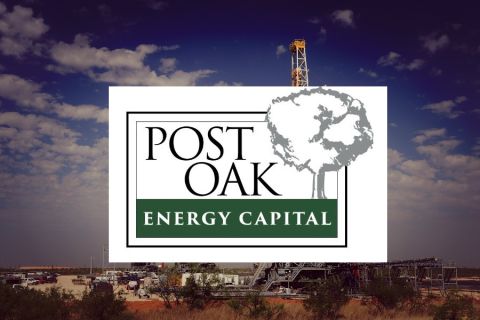Maarten Wetselaar, integrated gas and new energies director, Royal Dutch Shell Plc, came to Houston to talk about horse carriages.
Specifically, he noted the two decades in which carriage makers went into a steep decline in the U.S. In the early 1900s, about 4,000 companies were engaged in building carriages. By the 1920s, about 90 companies remained.
Coal and horse power, once the source of industrial energy and personal transportation, “were blown away,” he told an audience during the “Fuels of the Future: The new rivalry” panel at CERAWeek by IHS Markit.
The winner: oil. The 1901 Spindletop discovery of 1901, which gushed 100,000 barrels of oil a day, began a revolution. Oil won out, Wetselaar said, because it was “obviously superior in every one of these use cases.
“Now, here we are 180 years later, and there is a new revolution needed because the CO2 and air quality footprints of the current energy mix are not sustainable going forward,” he said.
But, Wetselaar said, this is not a Spindletop moment in which the falling costs of solar and wind power and batteries are “going to put a lot of carriage makers in this room out of business.”
“The one thing that was exceptional about Spindletop was that it was exceptional, that it was a one-off,” he said. “We don’t quite face the same moment in the history of the industry at the moment.”
But the oil and gas industry does face a choice of whether to step up and provide low-carbon energy sources or, as Wetselaar put it, “stick to our knitting.
“We should not see this as a new rivalry to establish one single solution, but a new and evolving balance between different fuels depending on customers’ needs and local availability,” he said.
Much of 2019’s CERAWeek backdrop focused on rivalries and the shape that future energy would take. But nearly all speakers saw the next several decades of energy as complementary rather than competitive.
John Hess, CEO of Hess Corp., said climate change is real: temperatures are up, oceans are warmer and acidifying and glaciers are melting. However, the world will still need much more energy even as it strives to reach the goals laid out by the 2016 Paris Climate Agreement.
“The challenge the world has is how do you provide a third more energy by 2040, and yet, at the same time reduce carbon emissions by 80%,” Hess said during a separate panel titled, “Company Strategies in a Time of Change.”
Hess Corp. is using data from the International Energy Agency to engage in scenario planning, but the “one we stress test is the sustainable development scenario” that is in line with the Paris agreement.
Hess said that even with meeting the Paris goals, the global energy transition will still require that oil and gas still comprise half of the world’s energy mix.
“I would venture to say that oil and gas are part of the transition because 50% of the energy mix in 2040, barring some amazing change in technology, will still be oil and gas.”
Companies, including Shell, could just stick with what they are doing.
“That’s a plausible strategy, and you’d probably be quite profitable in the coming decades as well,” Wetselaar said. “But there’s a risk that you’d be seen eventually as a profitable part of the problem.”
Another choice, he said, is to be a profitable part of the solution, looking for ways “to help our customers, to seduce our customers to take low-carbon solutions for their energy needs. And sure enough, there will still be a lot of oil in that mix and a lot of gas in that mix.”
However, while electric cars, biofuels and hydrogen have potential to help the environment, it will take time before they can gain enough share of the market to substantially reduce emissions from transport.
“Time the world, quite frankly, does not have,” Wetselaar said. “Recently the U.N.’s Intergovernmental Panel on Climate Change outlined the need for an ever more rapid transition to a lower-carbon world. Carbon-dioxide emissions need to fall sharply. Not starting in 2040, when there could be 280 million electric cars on the road, but from 2020.”
Jack Fusco, president and CEO of Cheniere Energy Inc., also sees natural gas as having a large role in the future and not just as a bridge or transition fuel.
“Natural gas has a meaningful role not only today, not 20 years from now, but forever,” he said.
Natural gas, he said, is a way to balance concerns over growing energy demand, environmental standards and geopolitical concerns.
“As our customers and the utilities start to convert from solid fuels, coal and nuclear to more combined-cycle natural gas [generation], they want a reliable, economic, sustainable fuel source,” he said.
With natural gas and LNG, Fusco said, utilities are making a 40-year bet on gas being around to back them up. In 2018, Cheniere added seven new foundational customers, bringing its total to 18. That means bringing online an additional 7 million tons of supply.
“A lot of that is going to combined-cycle gas plants to help them with their environmental goals,” he said.
Until 2016, Fusco served as CEO of Calpine Corp., the largest U.S. generator of electricity from natural gas and geothermal resources, operating 100 power plants in 23 states.
In Oregon, he said, the plant had both hydroelectric power as well as wind turbines surrounding it. Nevertheless, the plant still relies on a combined-cycle natural gas plan. Near the plant, the wind peaked in mid-afternoon and night before dropping off during the day.
“We sold the utility a baseload strip of power of fixed reliable power they could depend on,” he said. “We maximized the wind output and then used the natural gas combined cycle to shape that output.
“It works extremely well,” he added. “The two technologies stopped fighting against each other and started to support each other.”
Future fuel
Arnaud Breuillac, president of exploration and production at Total SA, also dismissed the idea of various forms of energy as rivals.
The fuel of the future, he added, is the future of the present: natural gas.
Like other speakers during CERAWeek, Breuillac sees a role for nearly all forms of energy—with the exception of coal.
“I do believe the only way to reduce CO2 emissions in the next 20 years is really by having a significant substitution of coal by gas in power generation,” he said.
He noted that natural gas emits half as much CO2 as coal while producing the same amount of energy.
Lisa Davis, CEO of Symens Gas and Power and member of the managing board, echoed the point. Davis said she doesn’t see a battle between renewables and natural gas.
“What we see is it actually being quite complementary, and if we could find and develop energy systems that have a nice balance between renewables and gas and convert away from oil and convert away from coal, obviously from a CO2 perspective, that would be quite an improvement,” she said.
Countries that are envisioning energy systems that rely on close to 100% renewable power are “quite fragile with respect to its stability because of the volatility of renewables, whether it be solar or wind.”
A reliable system requires conventional power generation to react to demand and provide stability.
“Even on the gas-fired power generation, we’re working with technology to continue to reduce the CO2 emissions, drive up the efficiency and even some … carbon capture to meet all of the objectives,” she said.
In Europe, switching all coal-powered plants to gas would remove 350 million tons of CO2 from the atmosphere each year.
“For this to happen we need a strong alignment between consumers, industry and policymakers,” he said.
However, some caution is needed before proceeding.
Yield at yellow
The gilets jaunes, or yellow vest protests, created horrific moments of civic unrest in France that began in late 2018. Chaotic streets were filled with police, running protestors and smoke canisters, leading up to at least 10 deaths and many significant injuries.
The protests initially ignited over additional “green” taxes that French President Emmanuel Macron placed on fuel.
Breuillac said it’s clear that customers want cleaner fuels; they just don’t want to pay more.
“We’ve seen that in France with the yellow jackets, as the government was trying to help the reduction of fuel consumption by adding some tax,” he said.
That tax was the equivalent for an average driver of about $100 per year of increment cost, he said.
“So you can see that customers are clearly not ready to accept paying more for their fuel to have a cleaner fuel,” he said. “We believe in natural gas as a fuel of the future in combination with renewables in addressing the climate challenge.”
That combination, Shell’s Wetselaar said, involves partnership between solar and wind power and affordable natural gas.
However, challenges remain.
“You still need to deal with the carbon footprint of the natural gas; added advancements in carbon capture and storage are still needed. It will also mean a nimble, global supply chain of LNG available around the world,” Wetselaar said.
“Once you’ve liquefied natural gas, you want to get it to a customer and burned for energy as soon as possible.”
One of the trends Wetselaar sees in energy is miniaturization in which it is targeting and service smaller customers and opening up smaller markets “that haven’t consumed gas previously or other use-cases that are small, like ships,” he said.
The filling of vessels with LNG to fuel them for their own consumption, also known as bunkering, is something Total is also developing.
“The LNG bunkering business is 0.4 million tons, so very, very small,” Breuillac said. But by 2020, Total sees a significant increase in LNG bunkering with demand as high as 25 million tons by 2025.
As Wetselaar put it, fueling a large ship, one the size of a cruise liner, is “in itself a meaningless transaction in the LNG market. But if you do billions of them, it’s big like filling cars. It starts to add up.”
Light minutes
Physicists have calculated that it takes about eight minutes for light to travel 92.3 million miles from the sun to the earth.
But as with most things, the actual timing is a little more complicated. A photon of light must first escape the ultradense core of our star and make its way to the surface—a journey that takes 100,000 years.
Timing is also an issue for companies now supplying oil and gas in terms of how to fit renewables that compete for capital with the assets already in their portfolios.
Breuillac still sees challenges in a space that is “relatively immature in some areas.”
Saudi Arabia, however, is investing in a mix of renewables and gas as it looks toward its energy future.
Saudi Arabia is preparing a “significant reset” of the fuel mix, Paddy Padmanathan, CEO and president of Saudi Arabia’s ACWA Power International, said during the CERAWeek panel discussion, “Gas and Renewables: Partners or Competitors?”
During the past 10 years, the kingdom has dabbled in how much of its energy mix can come from renewables, Padmanathan said.
So will it happen now? “I’m absolutely convinced it’s going to happen,” he said.
Padmanathan is surer now because of the concerns Saudi Arabia has with diversifying and growing its economy. And because of the cost.
Saudi Arabia’s first utility scale renewable energy plant will generate 300 megawatts of power with no subsidies. The plant can dispatch power at $0.23 per kilowatt hour.
“Within the next 12 years, even as we continue to grow demand … the mix will change to just under 50% of renewables from zero today,” he said.
However, Saudi Arabia has also embarked on a $150-billion gas development program.
“Saudi Arabia has got gas; they just never took it out of the ground because they were too busy making money out of the oil,” Padmanathan said. “They are now going to take it out of the ground, electrify it and enter the global gas market. That’s just another stream of gas coming on.”
Wetselaar said Shell has almost constantly underestimated the cost curve in renewables.
“Renewables’ costs have come down faster than we thought 20 years ago, 10 years ago, five years ago, three years ago,” he said. Biofuels, on the other hand, have gone far slower than Shell expected.
But too often, companies only consider the supply side of the energy equation, Wetselaar said.
“I think the trickiest thing for all of us is to change the way customers consume energy,” he said. “And this is a bigger challenge than we’ve been organized for as an industry.”
But he added that the dynamic of energy companies has been changing constantly.
“We’ve been, as a company, in coal. We’ve been in nuclear. We’ve been in mining,” he said. “And so we’re transitioning again.”
Recommended Reading
Patterson-UTI Braces for Activity ‘Pause’ After E&P Consolidations
2024-02-19 - Patterson-UTI saw net income rebound from 2022 and CEO Andy Hendricks says the company is well positioned following a wave of E&P consolidations that may slow activity.
Permian E&P Midway Energy Partners Secures Backing from Post Oak
2024-02-09 - Midway Energy Partners will look to acquire and exploit opportunities in the Permian Basin with backing from Post Oak Energy Capital.
NGL Energy Partners Announces Cash Distribution
2024-02-08 - Payments to holders of NGL Energy Partners’ Class B and C preferred units will be made Feb. 27.
Magnolia Appoints David Khani to Board
2024-02-08 - David Khani’s appointment to Magnolia Oil & Gas’ board as an independent director brings the board’s size to eight members.
Murphy Oil Names Eric Hambly as President, COO
2024-02-08 - Murphy Oil has promoted Eric M. Hambly to president and COO and E. Ted Botner to executive vice president. Both will continue to report to CEO Roger W. Jenkins.






